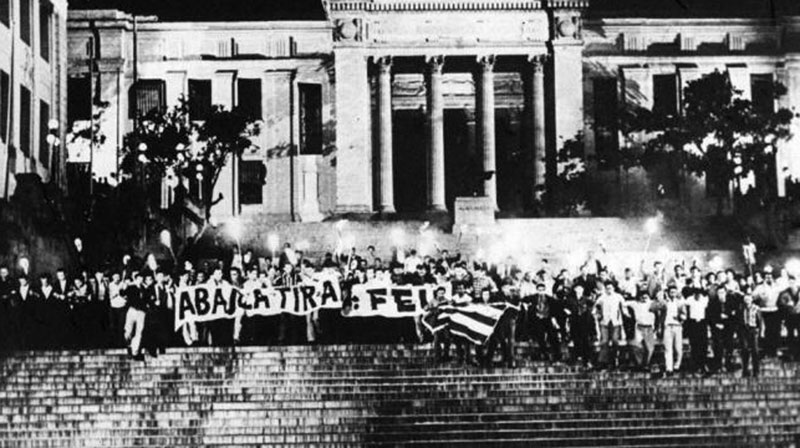
For Fulgencio Batista, the months that have elapsed since his coup d'état on March 10, 1952 were one of consolidation of his regime in the face of Washington's complacency and support. The acceptance of the traditional parties of a bourgeoisie more interested in benefiting from the good results of the harvest of that year than in demanding respect for the laws of bourgeois democracy rudely broken by the usurper.
However, he was profoundly mistaken in not considering that the people and especially the Cuban youth would not delay in leading the fight against that opprobrious regime. Batista even played with the most sacred symbols of the Homeland and tried to use the centenary of the birth of the Apostle of Cuban independence José Martí on January 28, 1953, to carry out a campaign of official acts in order to demonstrate the stability of his regime.
Meanwhile, from the very bowels of his administration, some considered that it was time, in addition to undertaking it against the communist symbols, and desecrated the white marble of the bust of Julio Antonio Mella in front of the University Staircase with tar, which provoked on January 15 a protest of the students along with other revolutionary sectors.
That day Rubén Batista was wounded by a bullet, who would die days later to become the first martyr of the university struggle against the dictatorship and who would inspire the leadership of the FEU to summon the students and the people in general to a march of the torches on the night of January 27, to await the birthday of the Apostle.
Under that call, thousands of Cubans together with the students in a tight column presided over with a large cloth with the slogan “down with the dictatorship”, descended the university steps wielding torches and carrying a huge flag guarded by the Martian Women's Civic Front.
That night the presence of the Centennial Generation became clear, made up of Fidel Castro, Raúl Castro, Pedro Miret, Ñico López, Juan Almeida, Armando Mestre and others who on July 26 of that year would attack the Moncada barracks in Santiago de Cuba, and Carlos Manuel de Céspedes, in Bayamo, to open the definitive stage of the liberation struggle.
The march made its way to the quarries of San Lázaro to the Fragua Martiana where the Master suffered forced labor, where the leader of the FEU, José Machado (Machadito), who would participate in the attack on the Presidential Palace, delivered a fiery speech that He ended up chanting the slogan of freedom together with those present.
Since then, a beautiful tradition began in which young people together with the people pay homage to the birth of the National Hero, following the example of the generation of his centenary, which, led by Fidel, did not allow him to die in the year of his 100th anniversary.
This year, on the 168th anniversary of Martí's birth, in a very complex context due to the effects of the Covid-19 pandemic, it is necessary to transfer the traditional March of the Torches to virtual space.
The call is to create and share each one's own torch, by means of candles, flashlights, flashes or cell phones, as well as posting messages on social networks that synthesize the ideas of the Apostle and also images and videos of previous marches.
